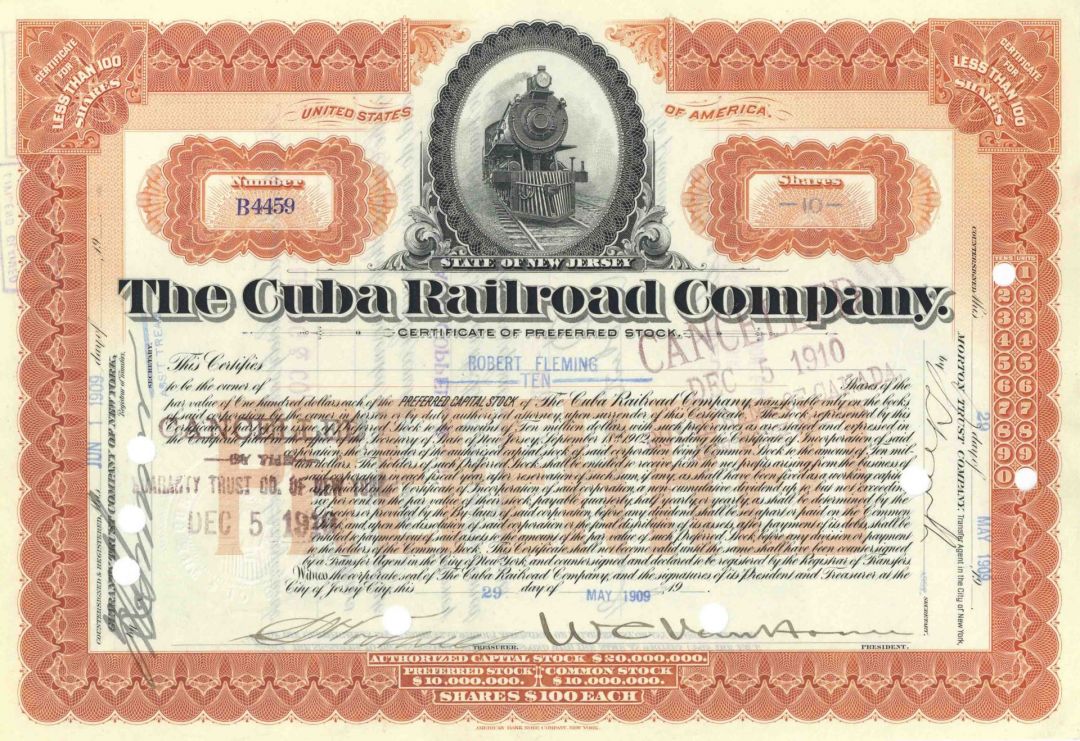Cuba Railroad Co. signed by William Cornelius Van Horne - 1909-1915 dated Autograph Railway Stock Certificate
Inv# AG1008 Autograph
Sir William Cornelius Van Horne (February 3, 1843 – September 11, 1915) was a highly influential figure in the development of the Canadian Pacific Railway (CPR) and the broader transportation industry. After succeeding Lord Mount Stephen as CPR president in 1888, Van Horne transformed the railway into a comprehensive communications and transportation network by integrating telegraph services and express freight delivery.
Van Horne, born in rural Illinois and later moving to Joliet, Illinois, at age eight, was deeply involved in the railway industry, even operating locomotives himself. His innovative approach extended beyond the CPR, as he played a significant role in the creation of the Cuba Railroad Company, which built the first trans-country railway in Cuba connecting Havana with the eastern provinces.
In addition to his work with the CPR, Van Horne launched the sea transport division of the CPR, establishing a regular service between Vancouver and Hong Kong in 1891 using the Empress luxury liners. His contributions also included expanding into the luxury hotel business, with his involvement in the design and development of iconic hotels such as the Château Frontenac in Quebec City and Château Lake Louise in Alberta. Van Horne lived in the Van Horne Mansion in Montreal's Golden Square Mile and was a prominent figure in Canadian mercantile and financial circles, as well as a publicist expressing his views on political and economic issues.
Ferrocarriles de Cuba (FCC), also known as Ferrocarriles Nacionales de Cuba, has a rich history of expansion and modernization, influenced by figures like Sir William Cornelius Van Horne. Van Horne's involvement in the early 20th century helped lay the foundation for Cuba's modern railway network.
In the 1920s, several railway companies merged and were formed, including Ferrocarriles del Norte de Cuba (1916), Ferrocarril Espirituano Tunas de Zaza, and Ferrocarril Guantánamo y Occidente. By the mid-20th century, significant modernization efforts were underway. The acquisition of trains from Budd and Fiat in the 1940s improved medium-speed self-propelled (diesel) service on the key Havana to Santiago de Cuba route. Additionally, a network of diesel intercity buses emerged to complement the rail system, and some sugar factories adopted diesel-electric locomotives for freight.
In 1958, Cuba boasted the highest railway trackage per square mile of any country, highlighting the extensive development and density of its railway infrastructure.












Ebay ID: labarre_galleries